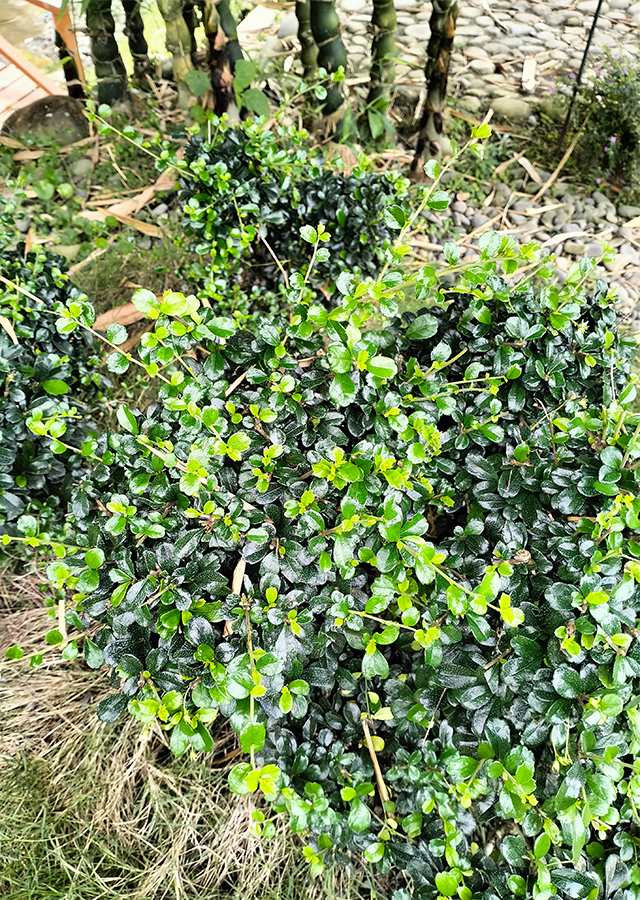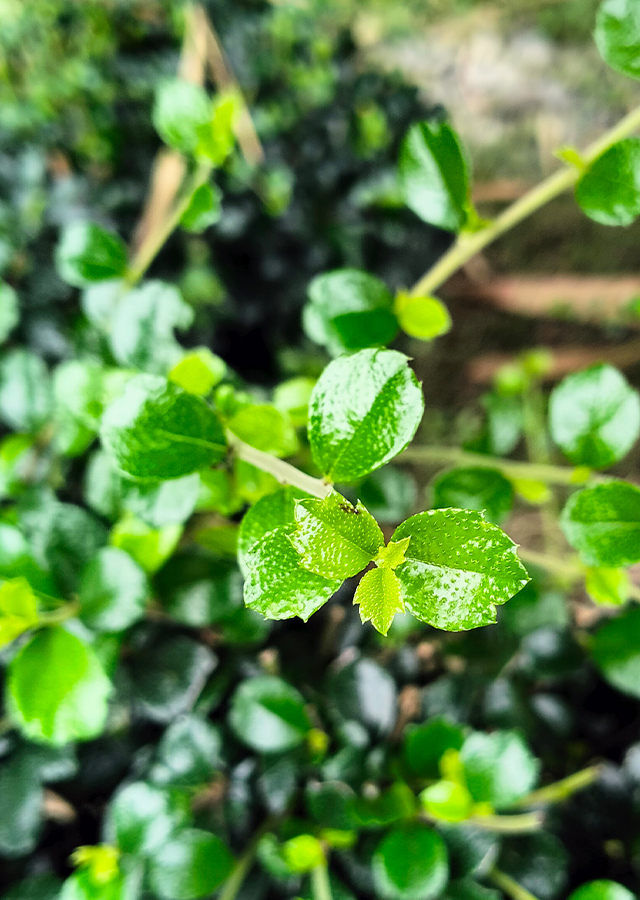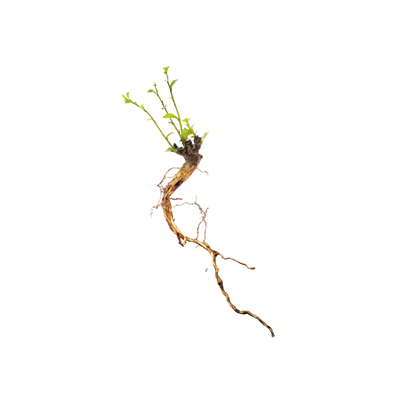Singapore Holly
Malpighia coccigera L.
Malpighiaceae
Location in our garden
Orchard



Synonym
Malpighia coccigera var. coccigrya (L.) Nied.
Malpighia coccigrya L.
Malpighia heterantha Wight
Habitus
Shrubs. A small low growing evergreen shrub that grows up to 2.5 m tall.
Part Used
Leaves
Roots
Growing Requirements
Full Sunshine
Need Shade
Habitat
Terrestrial
Overview
Malpighia coccigera is native to West Indies. The plant is widely cultivated as an ornamental in tropical and subtropical gardens, being valued especially for its compact habit and holly-like leaves. There are three varieties of malpighia which are used as bonsai subjects. The name, Malpighia, is used to honor Marcello Malpighia (1628 1693). He was a distinguished naturalist at Bologna, Italy. It is has environmental uses, as a medicine and for food.
Vernacular Names
Kalta malpia (Bangladesh), Seeme nelli (Kannada-India), Man Tian Xin (Chinese).
Agroecology
Can be found in rocky slopes, thickets and scrub forests. Grown in moist, moderately fertile, well-drained soil in full sun. Soil tolerances: alkaline; clay; sand; acidic; loam. May appreciate some part shade in the heat of the day. Plants dislike temperatures below 12.7 °C. It is very tolerant of trimming. Gently trim away dry, brown, or yellowish leaves by using a pair of secateurs. Trimming allows available nutrients in the soil to be transferred into the new leaves which encourage intentional growth.
Morphology
- Stem - thin, green, typically multitrunked or clumping stems.
- Leaves - compact, prickly, holly-like leaves, small shiny-green with spiny-toothed edges, opposite short petioled, simple elliptic, pinnate venation, less than 5 cm long.
- Flower - trumpet-shaped, pink, white, has 5 petals, produced singly or in pairs from the leaf axils.
- Fruit - shiny smooth, ovoid red berries (drupes), fruit cover is fleshy, less than 12,7 cm long, inconspicuous and not showy.
Cultivation
- Generative propagation is by seed.
- Vegetative propagation is by cuttings (hard or soft wood cuttings or root cuttings).
Chemical Constituents
Flavonoids, fatty acids, phenolic compunds.
Traditional Medicinal Uses
- Whole plant especially roots are boiled/decocted for at least 3 hours for general detoxification and remove toxins from liver.
- The formulation of leaves and extract from the plant, lowers elevated blood levels, promotes cytotoxic activity on liver cancer cells, but not on normal liver cells, restores liver lesions and cirrhotic tissue into normal “healthy” liver cells.
- Leaf paste is applied to treat boils.
Part Used
Reference Sources
- Gilman, Edward F. (1999). Malpighia coccigera. https://hort.ifas.ufl.edu/database/documents/pdf/shrub_fact_sheets/malcoca.pdf. 07-01-2023.
- Kew Royal Botanic Gardens. (No date). Plants of the World Online: Malpighia coccigera L. https://powo.science.kew.org/taxon/urn:lsid:ipni.org:names:323776-2. 07-01-2023.
- Missouri Botanical Garden. (No date). https://www.missouribotanicalgarden.org/PlantFinder/PlantFinderDetails.aspx?taxonid=282554. 07-01-2023.
- National Park of Singapore. (2021). Flora & Fauna Web: Malpighia coccigera L. https://www.nparks.gov.sg/florafaunaweb/flora/2/2/2206. 07-01-2023.
- Nature Info. (No date). Medicinal Plants of Banglasdesh-MPB: A Largest Medicinal Plants Database in Bangladesh. https://www.natureinfo.com.bd/mpb/13/. 07-01-2023.
- Planter and Forester. (2019). Medicinal Plant, Malpighia coccigera. https://www.planterandforester.com/2019/04/malpighia-coccigera.html. 07-01-2023.
- Seipold, L., Gerlach, G., and Wessjohann, L. (2004). A New Type of Floral Oil from Malpighia coccigera (Malpighiaceae) and Chemical Considerations on the Evolution of Oil Flowers. Chemistry & Biodiversity 1(10):1519-28. DOI:10.1002/cbdv.200490112.
- The Garden Store. (2023). MAN TIAN XIN MALPIGHIA COCCIGERA. https://www.thegardenstore.sg/Man-Tian-Xin-Singapore-Holly. 07-01-2023.

